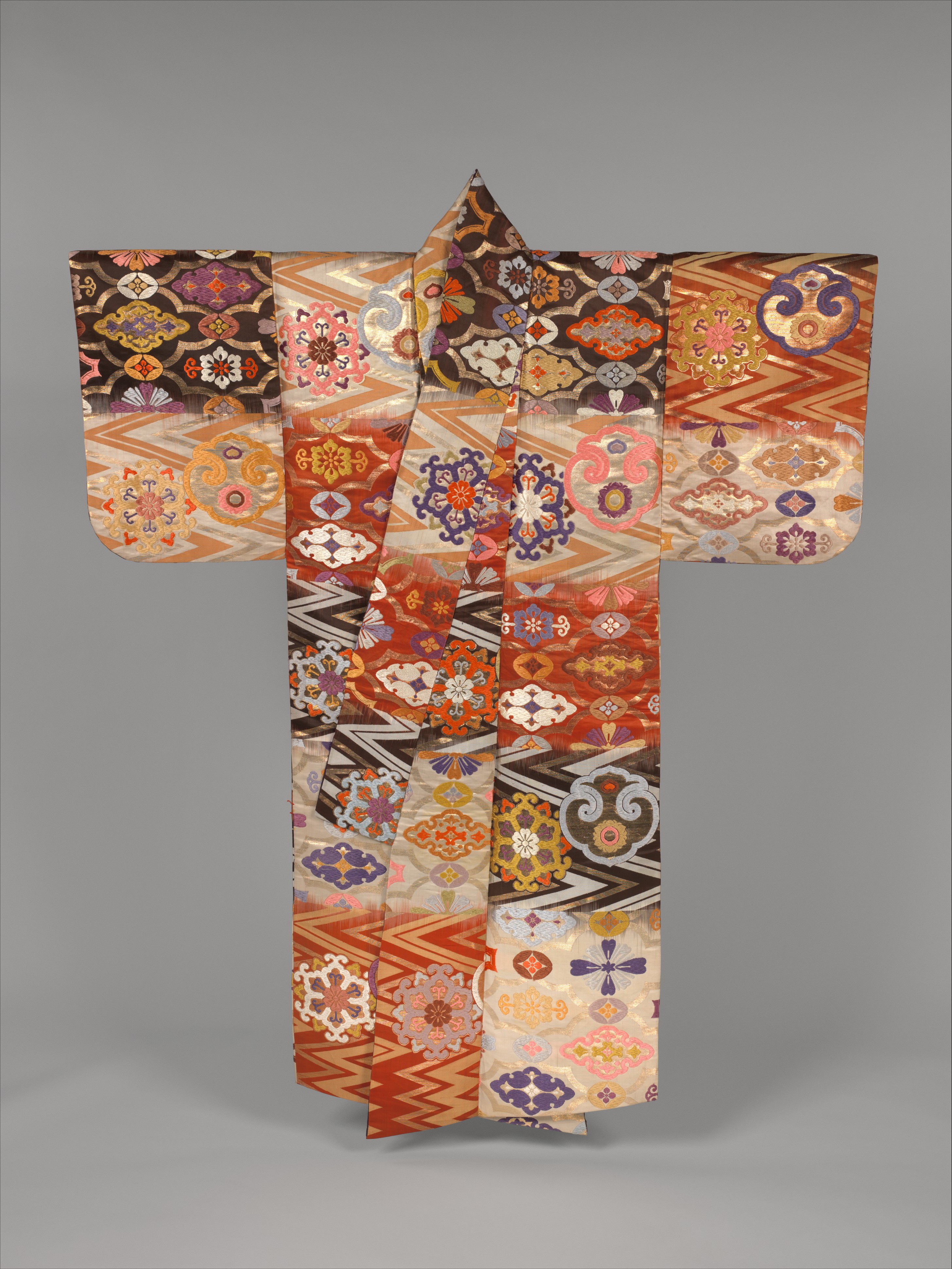Noh Robe (Atsuita) with Cloud-Shaped Gongs and “Chinese Flowers”
Not on view
The term atsuita originally referred to high-quality fabrics imported from China as bolts rolled around “thick wood boards” (atsu-ita). In the Muromachi period (1392–1573), warlords acquired these fabrics through private trade and presented them to Noh actors. The costumes made from such fabrics also came to be called atsuita. In the Edo period, these robes were made from twill-weave fabric produced in Japan and mainly worn by male leads playing warlords, gods, or demons. Costumes for violent gods and demons were decorated with powerful motifs, including dragons, clouds, zigzag patterns known as “hammer-wheels on lightning,” and cloud-shaped, flat gongs, as seen on this robe.
Due to rights restrictions, this image cannot be enlarged, viewed at full screen, or downloaded.
This artwork is meant to be viewed from right to left. Scroll left to view more.



